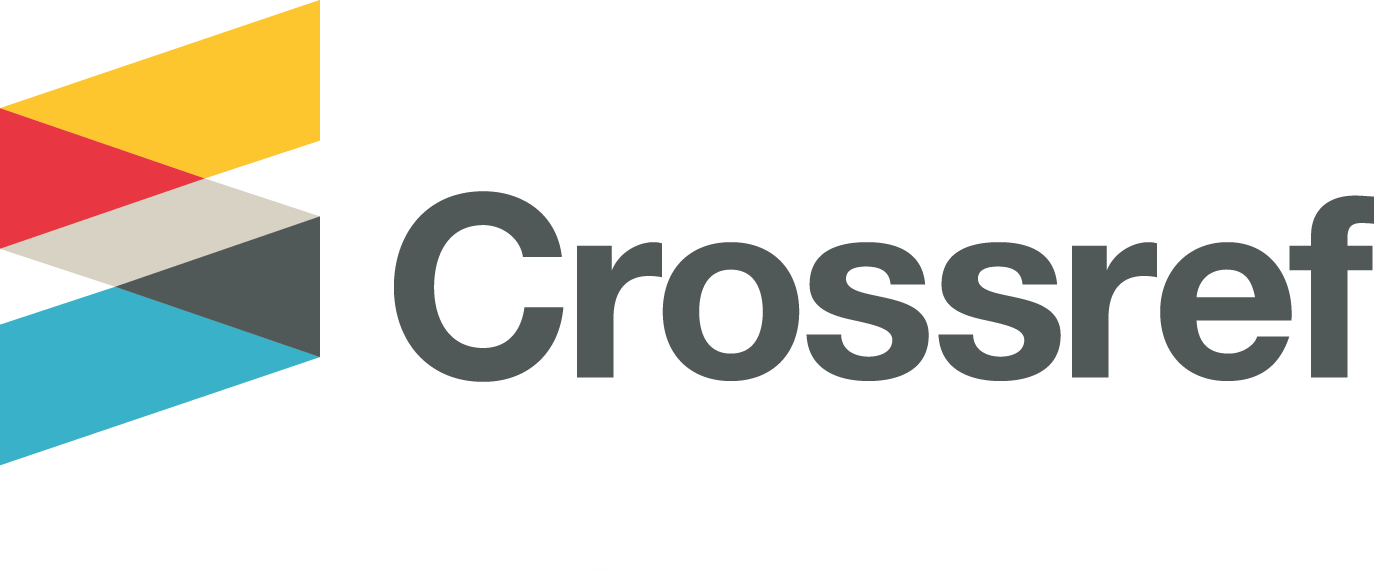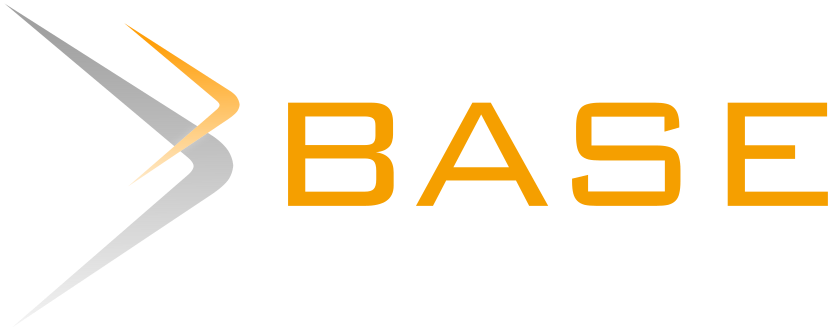Role of Health Belief Model on Preparedness of Trenggalek Community in Facing Earthquake Disasters: Study in ‘Desa Tangguh Bencana’ Program
Abstract
Desa Tangguh Bencana (Destana) is a community-based disaster risk reduction program developed by the Indonesian government to increase community preparedness against disaster. Destana is a village that can recognize threats in its territory, able to organize community resources to reduce vulnerability, and increase capacity to reduce disaster risk. This study aims to determine the role of the aspects of the Health Belief Model in the preparedness of the Destana community in Trenggalek Regency in dealing with earthquakes. This research was conducted on 65 participants with an age range of 18-59 years, have received the Destana program and has a high risk of earthquakes in Trenggalek Regency. Data collection used two questionnaires, namely, the Earthquake Readiness Scale (ERS) to measure community preparedness in dealing with earthquakes, and the General Disaster Preparedness Belief (GDPB) to measure people's confidence in preparedness which was designed based on the Health Belief Model. The process of collecting data is done by field survey. The data analysis technique used in this study is the Multiple Linear Regression Test. The results of the study show that there are 2 aspects of HBM that have a role in preparedness, namely Self-Efficacy and Perceived Severity. Self-efficacy has a positive role in preparedness, which means that the higher the community's confidence in dealing with the impact of a disaster, the more likely the community is to behave in a prepared manner. Perceived severity has a negative role in preparedness, meaning that the lower the public's perception of the impact of an earthquake hazard, the higher the probability that the community will take preparedness. Future research can conduct the research by incorporating other theory or approach considering Health Belief Model simultaneously do not consistently influence behavior.
Desa Tangguh Bencana (Destana) merupakan program pengurangan risiko bencana berbasis masyarakat yang dikembangkan pemerintah Indonesia sebagai upaya meningkatkan kesiapsiagaan masyarakat. Destana adalah sebuah desa atau kelurahan yang memiliki kemampuan untuk mengenali ancaman di wilayahnya, mampu mengorganisir sumber daya masyarakat untuk mengurangi kerentanan, dan meningkatkan kapasitas demi mengurangi risiko bencana. Penelitian ini bertujuan untuk mengetahui peran aspek-aspek Health Belief Model terhadap kesiapsiagaan masyarakat Destana di Kabupaten Trenggalek dalam menghadapi gempa bumi. Penelitian ini dilakukan pada 65 orang partisipan dengan rentang usia 18-59 tahun dari salah satu yang telah menerima program Destana dan memiliki risiko gempa bumi tinggi di Kabupaten Trenggalek. Pengambilan data menggunakan dua kuesioner yaitu, Earthquake Readiness Scale (ERS) untuk mengukur kesiapsiagaan masyarakat dalam menghadapi gempa bumi, dan General Disaster Preparedness Belief (GDPB) untuk mengukur keyakinan masyarakat terhadap kesiapsiagaan yang dirancang berdasarkan Health Belief Model. Proses pengambilan data dilakukan dengan survey lapangan. Teknik analisis data yang dilakukan pada penelitian ini adalah Uji Regresi Linier Berganda. Hasil dari penelitian menunjukkan bahwa terdapat 2 aspek HBM yang memiliki peran terhadap kesiapsiagaan yaitu Self-Efficacy dan Perceived Severity. Self-efficacy memiliki peran yang positif terhadap kesiapsiagaan, yang berarti semakin tinggi keyakinan masyarakat dalam menghadapi dampak bencana, semakin besar kemungkinan masyarakat berperilaku siap siaga. Percieved severity memiliki peran yang negative terhadap kesiapsiagaan, artinya, semakin turun persepsi masyarakat terhadap dampak bahaya gempabumi, semakin tinggi kemungkinan masyarakat melakukan kesiapsiagaan. Penelitian selanjutnya diharapkan bisa menggunakan pendekatan model atau teori lain karena aspek Health Belief Model secara bersamaan tidak konsisten mempengaruhi perilaku.
Keywords
Full Text:
FULL TEXTReferences
Adhikari, M., Paton, D., Johnston, D., Prasanna, R., & McColl, S. (2018). Modelling Predictors of Earthquake Hazard Preparedness in Nepal. Procedia Engineering, 212, 910-917.
Aldrich, D., & Meyer, M. (2015). Social Capital and Community Resilience. American Behavioral Scientist, 59(2), 254-269.
Amini, R., Biglari, F., Khodaveisi, M., & Tapak, L. (2021). Effect of education based on the health belief model on earthquake preparedness in women. International Journal of Disaster Risk Reduction, 52.
Apriyani, Y., & Uyun, M. (2023). Peran ketahanan diri dan self-efficacy untuk meningkatkan adversity quotient. Psikoborneo: Jurnal Ilmiah Psikologi, 11(2), 162-167.
Armaş, I., Cretu, R. Z., & Ionescu, R. (2017). Self-efficacy, stress, and locus of control: The psychology of earthquake risk perception in Bucharest, Romania. International Journal of Disaster Risk Reduction, 22, 71-76.
Chai, L., Han, Y., Han, Z., Wei, J., & Zhao, Y. (2021). Differences in disaster preparedness between urban and rural communities in China. International Journal of Disaster Risk Reduction, 53.
Daniel, T. (2007). The Effects of Risk Perception and Adaptation on Health and Safety Interventions. Dalam Wildfire Risk: Human Perceptions and Management Implications (1st Edition).
Dewi, T. K., Massar, K., Ruiter, R. A., & Leonardi, T. (2019). Determinants of breast self-examination practice among women in Surabaya, Indonesia: An application of the health belief model. BMC Public Health, 19(1), 1581.
Dillard, J. P., Plotnick, C. A., Godbold, L. C., Freimuth, V. S., & Edgar, T. (1996). The Multiple Affective Outcomes of AIDS PSAs: Fear Appeals Do More Than Scare People. Communication Research, 23(1), 44-72.
Ejeta, L., Ardalan, A., & Paton, D. (2015). Application of Behavioral Theories to Disaster and Emergency Health Preparedness: A Systematic Review. PLoS Currents.
Epstein, J., Santo, R., & Guillemin, F. (2015). A review of guidelines for cross-cultural adaptation of questionnaires could not bring out a consensus. Journal of Clinical Epidemiology, 68(4), 435-441.
Farida, A. (2014). Reconstructing Social Identity for Sustainable Future of Lumpur Lapindo Victims. Procedia Environemntal Sciences, 20, 468-476.
Glanz, K., Rimer, B., & Viswanath, K. (2008). Health behavior and health education: Theory, research, and practice. John Wiley & Sons.
Green, E., Murphy, E., & Gryboski, K. (2020). The Health Belief Model. Dalam R. Paul, L. Salminen, J. Heaps, & L. Cohen, The Wiley Encyclopedia of Health Psychology (hal. 211-214). Wiley.
Hadi, H., Agustina, S., & Subhani, A. (2019). Penguatan Kesiapsiagaan Stakeholder dalam Pengurangan Risiko Bencana Gempa Bumi. Jurnal Geodika(1), 11.
Haraoka, T., Ojima, T., Murata, C., & Hayasaka, S. (2012). Factors influencing collaborative activities between non-professional disaster volunteers and victims of earthquake disasters. PLoS ONE, 7(10).
Hastings, G., Stead, M., & Webb, J. (2004). Fear appeals in social marketing: Strategic and ethical reasons for concern. Psychology & Marketing, 21(11), 961-986.
Hizbaron, D., Iffani, M., Wijayanti, H., & Nur, W. (2017). Disaster Management Practice Towards Diverse Vulnerable Groups in Yogyakarta. Proceedings of the Lst International Cohference on Geography and Education (ICGE 2016). Malang: lst International Cohference on Geography and Education (ICGE 2016).
Husein, S. (2016). Bencana Gempabumi.
Inal, E., & Dogan, N. (2018). Improvement of General Disaster Preparedness Belief Scale Based on Health Belief Model. Prehospital and Disaster Medicine, 33(6), 627-636.
Kerstholt, J., Duijnhoven, H., & Paton, D. (2017). Flooding in The Netherlands: How people’s interpretation of personal, social and institutional resources influence flooding preparedness. International Journal of Disaster Risk Reduction, 24, 52-57.
Kurata, Y., Ong, A., Prasetyo, Y., Dizon, R., Persada, S., & Nadlifatin, R. (2023). Determining factors affecting perceived effectiveness among Filipinos for fire prevention preparedness in the National Capital Region, Philippines: Integrating Protection Motivation Theory and extended Theory of Planned Behavior. International Journal of Disaster Risk Reduction, 85.
Lindell, M., & Perry, R. (2012). The Protective Action Decision Model: Theoretical Modifications and Additional Evidence: The Protective Action Decision Model. Risk Analysis, 32(4), 616-632.
LIPI-UNESCO/ISDR. (2006). Laporan Kajian Kesiapsiagaan Masyarakat (UNESCO-LIPI). LIPI.
McLennan, J., Cowlishaw, S., Paton, D., Beatson, R., & Elliott, G. (2014). Predictors of south-eastern Australian householders’ strengths of intentions to self-evacuate if a wildfire threatens: Two theoretical models. International Journal of Wildland Fire, 23(8), 1176.
McLennan, K., Cowlishaw, S., Paton, D., Beatson, R., & Elliot, G. (2014). Predictors of South-eastern Australian Householders' Strengths of Intentions to Self-evacuate if a Wildfire Threatens: Two Theoretical Models. International Journal of Wildland Fire, 23(8), 1176.
Mishra, S., & Suar, D. (2012). Effects of Anxiety, Disaster Education, and Resources on Disaster Preparedness Behavior: ANXIETY, EDUCATION, RESOURCES, AND PREPAREDNESS. Journal of Applied Social Psychology, 42(5), 1069-1087.
Nur, A. (2010). GEMPA BUMI, TSUNAMI DAN MITIGASINYA. 7(1), 8.
Parlan, H. (2013). PASTI (Preparedness Assessment Tools for Indonesia): Diagnostic Tools for Disaster Preparedness. Dalam C. Margottini, P. Canuti, & K. Sassa, Landslide Science and Practice: Volume 7: Social and Economic Impact and Policies (hal. 303-309). Berlin: Springer Berlin Heidelberg.
Parsons Leigh, J., Fiest, K., Brundin-Mather, R., Plotnikoff, K., Soo, A., Sypes, E. E., . . . Stelfox, H. T. (2020). A national cross-sectional survey of public perceptions of the COVID-19 pandemic: Self-reported beliefs, knowledge, and behaviors. PLOS ONE, 15(10).
Paton, D. (2003). Disaster preparedness: A social‐cognitive perspective. Disaster Prevention and Management: An International Journal, 12(3), 2010-2016.
Paton, D. (2019). Disaster risk reduction: Psychological perspectives on preparedness. Australian Journal of Psychology, 71(4), 327-341.
Paton, D. S., Smith, L., & Johnston, D. (2005). When good intentions turn bad: Promoting natural hazard preparedness. Australian Journal of Emergency Management, 20(25).
Polit, D., & Beck, C. (2006). The content validity index: Are you sure you know what’s being reported? critique and recommendations. Research in Nursing & Health, 29(5), 489-497.
Putri, A., Purwanto, M., & Widodo, A. (2017). Identifikasi Percepatan Tanah Maksimum (PGA) dan Kerentanan Tanah Menggunakan Metode Mikrotremor Jalur Sesar Kendeng. Jurnal Geosaintek, 3(2), 107.
Putri, G. (2021, Mei 28). Hasil Permodelan BMKG, Tinggi Maksimum Potensi Tsunami Jawa Timur 29 Meter. Diambil kembali dari KOMPAS.com: https://www.kompas.com/sains/read/2021/05/28/163200623/hasil-pemodelan-bmkg-tinggi-maksimum-potensi-tsunami-jawa-timur-29-meter
Ramdan, I. M., Candra, K. P., & Sultan, M. (2022). Perception of preventing behavior against COVID-19 among Indonesian industrial workers. International Journal of Public Health Science (IJPHS), 11(1), 98.
Rostami-Moez, M., Rabiee-Yeganeh, M., Shokouhi, M., Dosti-Irani, A., & Rezapur-Shahkolai, F. (2020). Earthquake preparedness of households and its predictors based on health belief model. BMC Public Health, 20(1), 646.
Ruiter, R. A., Kessels, L. T., Peters, G. Y., & Kok, G. (2014). Sixty years of fear appeal research: Current state of the evidence. International Journal of Psychology, 49(2), 63-70.
Satyawati, C., & Soetjiningsih, C. (2022). Burnout pada tenaga kesehatan selama masa pandemi: Benarkah self-efficacy memiliki pengaruh? Psikoborneo: Jurnal Ilmiah Psikologi, 10(4), 683-692.
Srithongklang, W., Panithanang, B., Kompor, P., .Pengsaa, P., Kaewpitoon, N., Wakkhuwatapong, P., & Kaewpitoon, S. J. (2019). Effect of Educational Intervention Based on the Health Belief Model and Self-Efficacy in Promoting Preventive Behaviors in a Cholangiocarcinoma Screening Group. Journal of Cancer Education.
Sujono. (2014). Hubungan antara efikasi diri (self efficacy) dengan problem focused coping dalam proses penyusunan skripsi pada mahasiswa FMIPA Unmul. Psikoborneo: Jurnal Ilmiah Psikologi, 2(2), 67-71.
Sungkawa, D. (2016). DAMPAK GEMPA BUMI TERHADAP LINGKUNGAN HIDUP. Jurnal Geografi Gea, 7(1).
Syarif, H., & Mastura. (2015). HUBUNGAN SELF EFFICACY DENGAN KESIAPSIAGAAN BENCANA GEMPA BUMI DAN TSUNAMI PADA SISWA SEKOLAH MENENGAH ATAS NEGERI 2 DAN 6 BANDA ACEH. Idea Nursing Journal, 2, 9.
Tannenbaum, M. B., Hepler, J., Zimmerman, R. S., Saul, L., Jacobs, S., Wilson, K., & Albarracín, D. (2015). Appealing to fear: A meta-analysis of fear appeal effectiveness and theories. Psychological Bulletin, 141(6), 1178-1204.
Wardani, N., & Putra, D. (2017). Strengthening Local Capacity in Disaster Risk Reduction (Case Study: Disaster Resilient Village in Batu City, East Java, Indonesia). Proceedings of the Lst International Cohference on Geography and Education (ICGE 2016). Malang: lst International Cohference on Geography and Education (ICGE 2016).
Yunus, R., Amri, M., Wartono, Kristanto, Y., & Nugraheni, A. (2019). Katalog Desa/Kelurahan Rawan Gempabumi.
DOI: http://dx.doi.org/10.30872/psikoborneo.v11i4.12051
Refbacks
- There are currently no refbacks.
Copyright (c) 2023 Lantip Muhammad Dewabrata, dkk

This work is licensed under a Creative Commons Attribution-ShareAlike 4.0 International License.
PSIKOBORNEO: Jurnal Ilmiah Psikologi Published by Faculty of Social and Political Siences, University of Mulawarman, Samarinda, East Kalimantan and This work is licensed under a Creative Commons Attribution-ShareAlike 4.0 International License.
________________________________________
PSIKOBORNEO: Jurnal Ilmiah Psikologi
Department of Psychology
Faculty of Social and Political Siences, University of Mulawarman
Jl. Muara Muntai Kampus Gn. Kelua Samarinda 75411
Phone: +62 813 35350368
E-Mail: psikoborneo@gmail.com / psikoborneo@fisip.unmul.ac.id
















